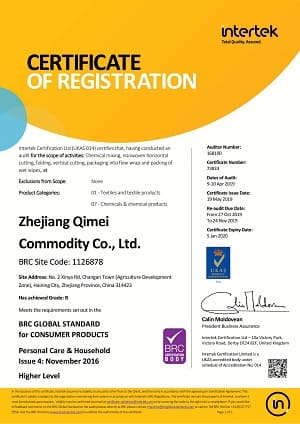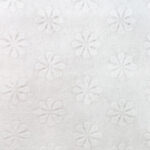Spunlace onwoven Fabric Type: Polyester,Poly -Viscose Blend material, Bamboo Fiber, Wood Pulp(Flushable), Cotton or Soy Fiber(Biodegradable)
Flat or Textured( Your Own LOGO is available)
Grammage: 30-80gsm
1/10/30/80/100/120/160 pcs/pack
The most common size of cosmetic wipes is around 2 inches by 2 inches to 4 inches by 4 inches. This size is convenient for single-use and provides enough surface area to clean and freshen the external genital area. However, some intimate wipes may be smaller or larger than this standard size to cater to specific preferences or needs of consumers.
1. Plastic resealable bag: This is the most common type of wet wipe packaging. It is made of plastic and has a resealable strip on top to keep the wipes fresh and moist.
2. Flip-top lid container: This type of packaging consists of a plastic container with a flip-top lid that can be opened and closed to access the wipes.
3. Soft pack with plastic flip-top lid: Similar to the flip-top lid container, this packaging comes in a soft pack and has a plastic flip-top lid for easy access.
4. Pop-up dispenser: This type of packaging features a pop-up dispensing mechanism that pulls out one wipe at a time.
5. Travel pack: A small packaging designed for on-the-go use, it often comes with a plastic snap closure.
6. Single-use packaging: These wet wipes come in small, sealed packets which are convenient for travel or outdoor activities.
7. Refill bag: This larger size packaging is designed to refill other wet wipe containers, and usually has a resealable opening.
Water: Water is typically the main ingredient in cosmetic wipes, as it serves as a solvent to dissolve and remove dirt, makeup, and other debris from the skin.
Surfactants: Surfactants are compounds that reduce the surface tension of water and help it to spread more evenly over surfaces. They can be used in cosmetic wipes to help remove dirt and grease from the skin.
Emollients: Emollients are ingredients that help to moisturize and soothe the skin. They may be added to cosmetic wipes to help prevent dryness or irritation.
Preservatives: Preservatives may be added to cosmetic wipes to prevent the growth of bacteria, mold, and other microorganisms that can cause the wipes to spoil or lose their effectiveness.
Fragrances: Fragrances may be added to cosmetic wipes to give them a pleasant scent and improve the overall user experience.
Other ingredients: Depending on the intended use of the product, other ingredients such as vitamins, plant extracts, or sunscreen agents may be added to cosmetic wipes to provide additional benefits to the skin.
Good Manufacturing Practice (GMP): GMP is a set of guidelines that ensure that products are consistently produced and controlled according to quality standards. Compliance with GMP is usually required for products that are intended for human use, including cosmetic wipes.
ISO 9001: This is a quality management system certification that sets standards for the design, production, and delivery of products. It is often required for businesses that supply products to other companies.
ISO 22716: This certification is specific to the cosmetics industry, and sets standards for the production, control, storage, and shipment of cosmetic products.
Oeko-Tex Standard 100: This certification sets standards for the safety and environmental impact of textile products. It may be relevant for cosmetic wipes that are made from textile materials.
FDA Registration: In the United States, manufacturers of cosmetic products are required to register their facilities with the U.S. Food and Drug Administration (FDA).












